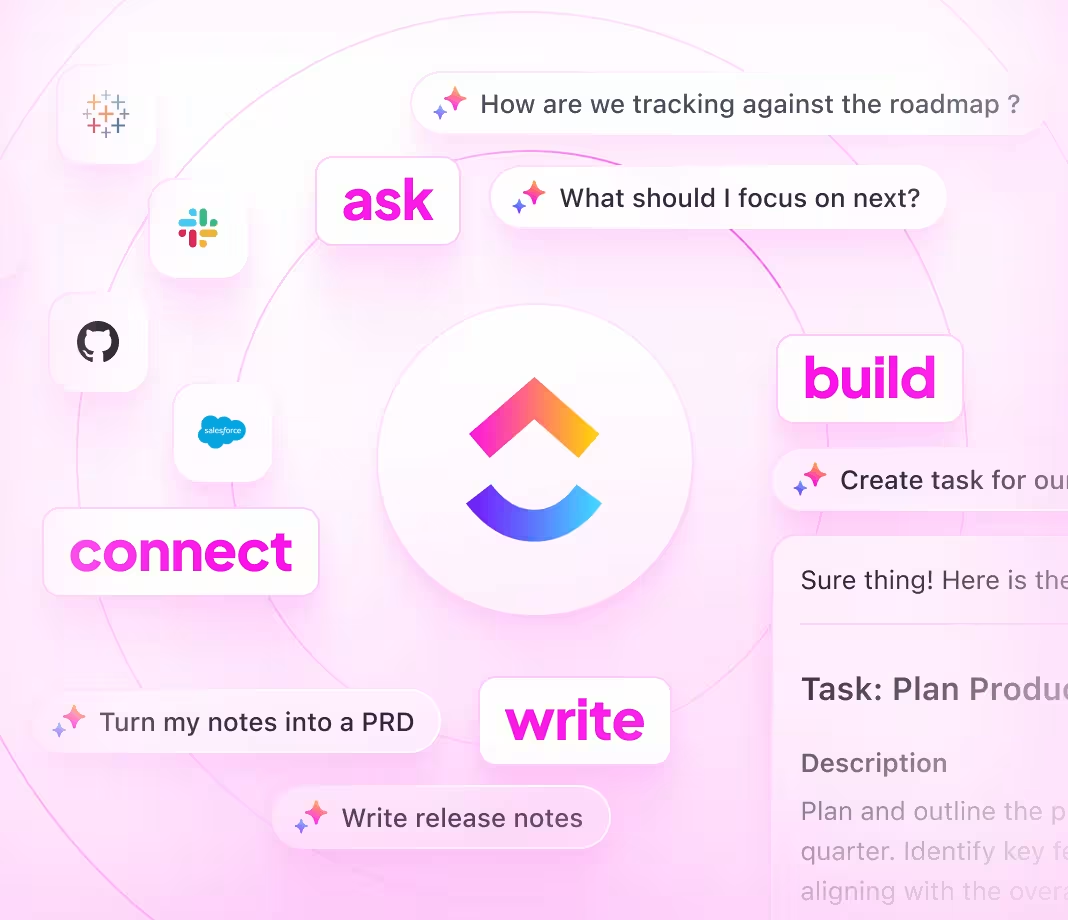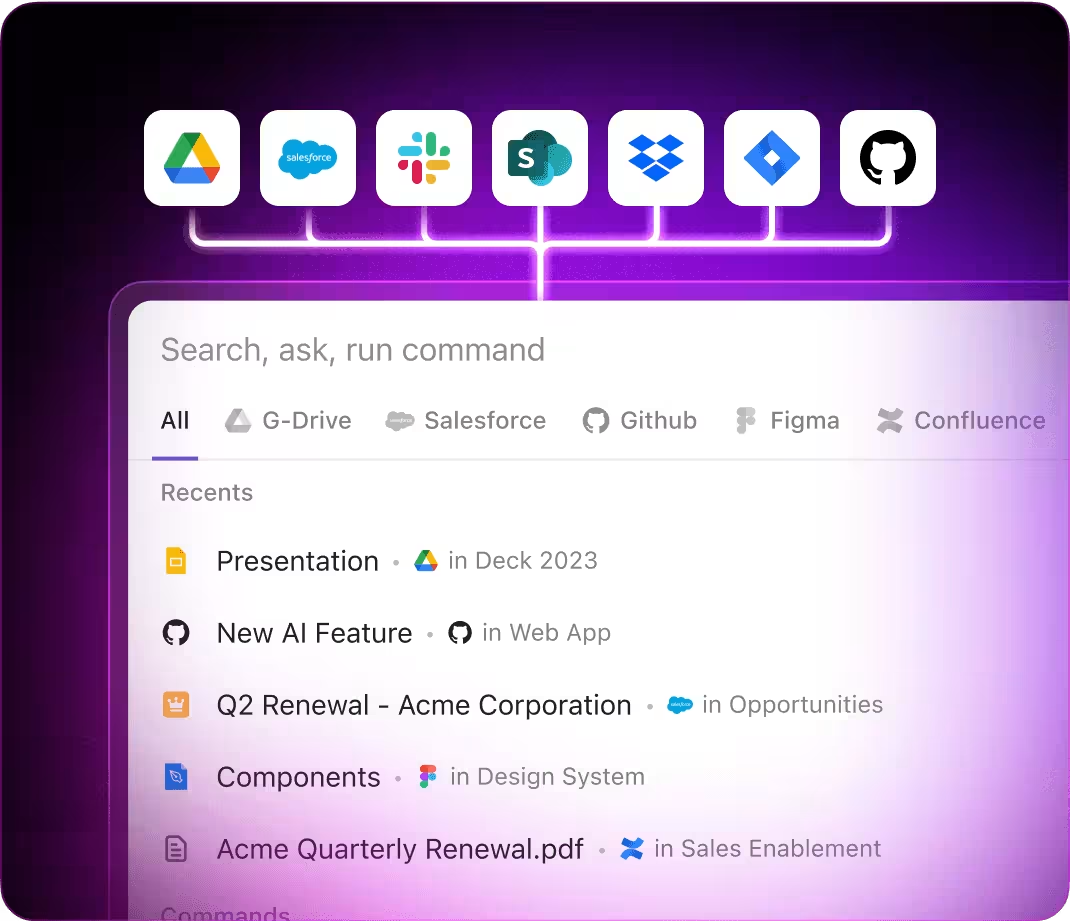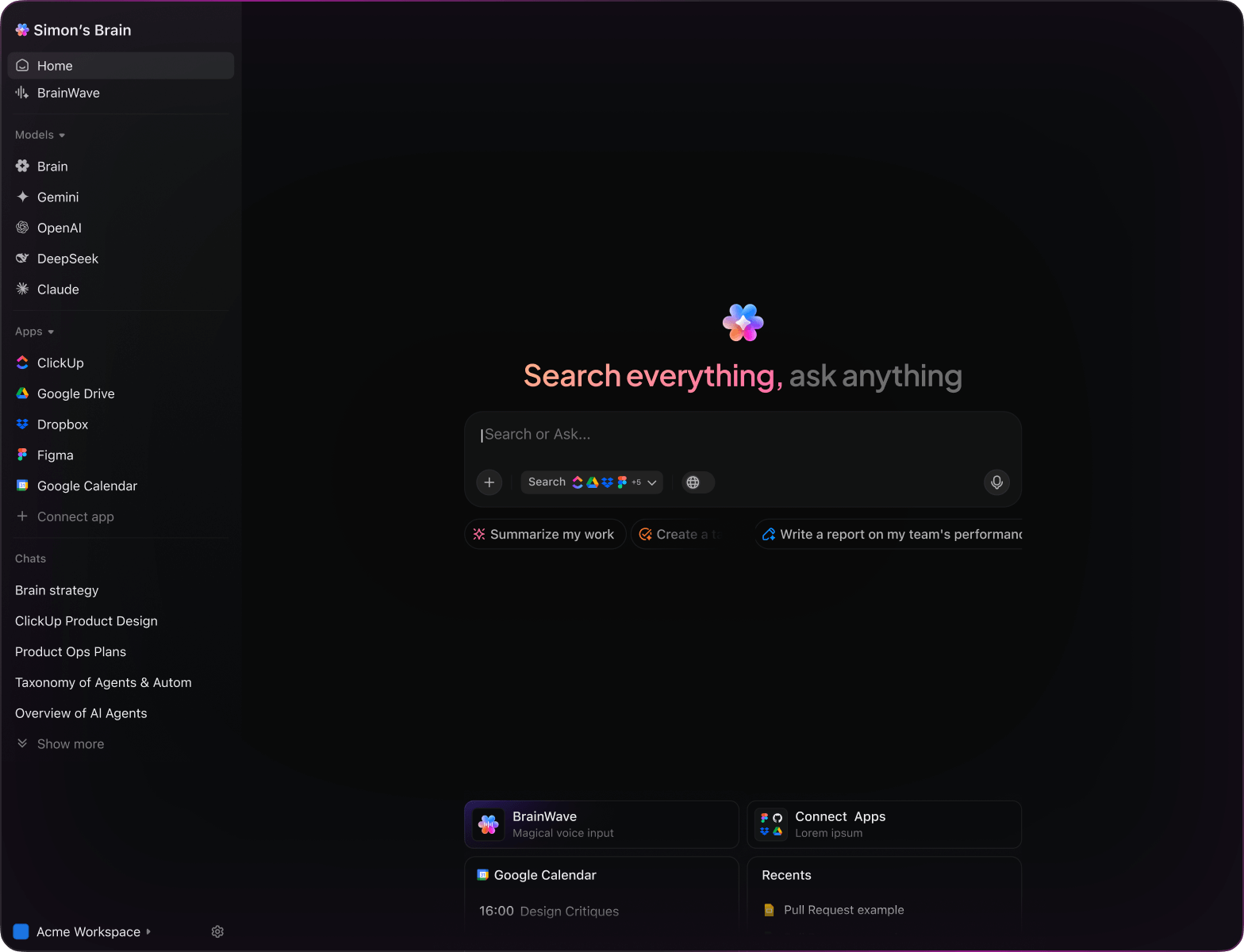Automotive AI Innovation
Top AI Prompts Tailored for Car Design
Elevate your vehicle concepts, simplify project steps, and accelerate your design process using ClickUp AI.

Trusted by the world’s leading businesses
AI Empowering Auto Innovation
Revolutionizing Car Design with AI-Driven Prompts
Crafting tomorrow's vehicles extends far beyond the assembly line—it's about orchestrating every step from concept to compliance.
Automotive design today juggles numerous elements: initial sketches, CAD development, user interface planning, and regulatory adherence. Managing this complexity demands smarter tools.
Automotive teams leverage AI to:
- Quickly identify emerging design trends and inspirations
- Generate detailed specifications, wireframes, and interaction flows effortlessly
- Decode and condense intricate regulations and technical manuals
- Transform scattered notes into clear outlines, actionable checklists, and project tasks
Integrated within familiar platforms like documents, collaborative boards, and task trackers, AI in ClickUp Brain elevates productivity by converting creative ideas into structured, manageable projects.
ClickUp Brain vs Conventional Solutions
Why ClickUp Brain Excels in Auto Design
ClickUp Brain integrates seamlessly with your workflow, understanding your project context so you focus on creating, not explaining.
Standard AI Platforms
- Constantly toggling between apps to compile design details
- Repeating project objectives with every query
- Receiving generic, irrelevant suggestions
- Hunting through multiple systems for a single blueprint
- Interacting with AI that lacks project awareness
- Manually switching between different AI engines
- Merely a browser add-on without deep integration
ClickUp Brain
- Instantly accesses your automotive design tasks, specs, and team notes
- Tracks your project evolution and design goals
- Delivers tailored, practical guidance
- Searches across all your design documents and tools
- Supports voice commands with Talk to Text
- Automatically selects the optimal AI engine: GPT, Claude, Gemini
- Dedicated Mac & Windows app optimized for performance
AI Prompts Tailored for Automotive Design
15 Essential AI Prompts to Accelerate Automobile Design
Enhance vehicle design workflows—ideation, analysis, and compliance simplified with AI.

Identify 5 innovative exterior styling concepts for a compact electric SUV, drawing inspiration from the ‘Spring 2025 Concept’ document.
ClickUp Brain Behavior: Analyzes design narratives and visual themes from the linked document to propose fresh styling directions.

What are the prevailing interior layout trends in electric vehicles priced below $25,000 in North America?
ClickUp Brain Behavior: Integrates insights from internal market research; Brain Max can supplement with relevant external data when accessible.

Compose a design brief for a minimalist dashboard influenced by Scandinavian design principles, referencing Sketch File #8 and previous concept notes.
ClickUp Brain Behavior: Extracts pertinent annotations and textual references from linked files to generate a structured design brief.

Provide a summarized comparison of front suspension systems between Tesla Model Y and VW ID.4 using data from the ‘Suspension Q2’ document.
ClickUp Brain Behavior: Retrieves and condenses tabular and descriptive data from internal sources into a clear comparative summary.

List leading thermal management materials utilized in high-performance electric vehicles, referencing R&D notes and supplier specifications.
ClickUp Brain Behavior: Scans internal documents to identify frequently mentioned materials and their performance characteristics.

From the ‘Steering System Validation’ document, create a DVP&R-style checklist outlining component testing criteria.
ClickUp Brain Behavior: Extracts test parameters and formats them into an organized checklist within a task or document.

Summarize three emerging gesture control trends in infotainment user experience based on research and technology review documents after 2024.
ClickUp Brain Behavior: Detects recurring themes and insights from linked research materials.

From the ‘Gen Z UX Survey Q1’ document, highlight key preferences for automotive app interfaces.
ClickUp Brain Behavior: Analyzes survey data to identify common design themes and user feedback.

Write concise and playful UX copy for the eco-mode toggle screen, guided by the tone outlined in ‘ProductTone.pdf.’
ClickUp Brain Behavior: Draws on tone guidelines to suggest creative text variations for interface elements.

Summarize major updates in EU 2025 pedestrian safety regulations and their implications for vehicle fascia design.
ClickUp Brain Behavior: Reviews internal compliance documents and integrates public updates if available.

Generate placement and sizing guidelines for EV charging indicators based on India-specific compliance documents stored in our workspace.
ClickUp Brain Behavior: Extracts regulatory measurements and positioning rules to create a compliance checklist.

Develop a frontal crash-test checklist referencing US NCAP 2025 PDFs and chassis design documentation.
ClickUp Brain Behavior: Identifies test requirements from PDFs and organizes tasks by impact zones and severity levels.

Analyze interior sustainability elements like recycled materials among Tesla, Lucid, and Rivian using competitive analysis documents.
ClickUp Brain Behavior: Summarizes comparative data into an accessible format such as tables or briefs.

Identify new interior design trends in autonomous vehicles from 2023 onward, based on internal research and concept summaries.
ClickUp Brain Behavior: Synthesizes trend data from research notes and uploaded reports.

Summarize primary cabin usability challenges reported in Southeast Asia EV feedback, covering materials, layout, and user interactions.
ClickUp Brain Behavior: Extracts and ranks user-reported problems from surveys, feedback notes, and tagged tickets.
Accelerate Auto Design with ClickUp Brain
Cut down revisions, unify your design crew, and produce superior concepts through AI-enhanced workflows.






AI Prompts Tailored for Automotive Design with ClickUp Brain
Discover How ChatGPT, Gemini, Perplexity, and ClickUp Brain Enhance Automotive Design Workflows
ChatGPT Automotive Design Prompts
- Outline a 5-point design summary from these electric vehicle sketches focusing on eco-friendly innovations.
- Compose promotional text for a new electric SUV highlighting safety, comfort, and environmental benefits.
- Propose 3 distinct roofline concepts for a compact SUV, emphasizing aerodynamic improvements.
- Develop a detailed process plan for integrating autonomous driving tech into a sedan prototype.
- Review the last three hatchback interiors and extract the top requested features for upcoming models.
Gemini Automotive Design Prompts
- Create 3 dashboard UI concepts for a compact SUV inspired by customer feedback from previous models.
- Suggest creative lighting design ideas for EVs that enhance driver and passenger experience.
- Describe a mood board for a futuristic EV cabin, focusing on materials, hues, and textures.
- Recommend ergonomic seating arrangements for a 7-passenger SUV, ranking by comfort and safety.
- Build a comparison chart for three electric sedans focusing on efficiency, style, and features.
Perplexity Automotive Design Prompts
- Identify 5 sustainable materials for vehicle interiors and rank them according to practicality.
- Compare battery technologies for compact EVs, emphasizing cost, performance, and environmental impact.
- Summarize global trends in autonomous vehicle interfaces and their acceptance among users.
- List 5 innovative storage solutions for hatchbacks and evaluate their usability.
- Analyze previous EV concept designs and highlight the top 3 insights for future prototypes.
ClickUp Brain Automotive Design Prompts
- Transform this customer feedback thread into clear UX and engineering action items.
- Condense design meeting notes and generate follow-up tasks with assigned owners and deadlines.
- Review annotated CAD drawings and create a checklist for engineering assessments.
- Compile a prioritized task list from this cross-functional discussion on dashboard UI enhancements.
- Summarize user testing transcripts for infotainment updates and create actionable design and bug tasks in ClickUp.
Why Choose ClickUp
Transform Concepts into Detailed Designs
- Convert initial sketches and notes into polished design documents swiftly.
- Generate innovative ideas by analyzing previous vehicle models and feedback.
- Build customizable templates to accelerate each design phase.
Brain Max Boost: Quickly access historical design data, critiques, and multimedia assets to fuel your upcoming automobile projects.

Why Choose ClickUp
Accelerate Your Design-to-Production Workflow
- Break down intricate design talks into straightforward, actionable items.
- Transform conceptual sketches and feedback into assignable tasks effortlessly.
- Automatically produce detailed handoff documents and progress summaries without lifting a finger.
Brain Max Boost: Instantly access historical design files, component analyses, and CAD revisions across all projects.

AI Advantages
Elevate Every Phase of Vehicle Design with AI Prompts
AI prompts accelerate creativity and inspire innovative, cutting-edge automobile designs.
Instantly Craft Innovative Concepts
Automotive designers explore daring ideas rapidly, enhance creative choices, and overcome design bottlenecks.
Enhance Design Choices with Confidence
Reduce uncertainties, minimize risks, and develop vehicles that satisfy both consumers and compliance standards.
Identify Flaws Early to Save Costs
Prevents expensive late-stage fixes, boosts product quality, and accelerates launch timelines.
Align Cross-Functional Teams Efficiently
Strengthens teamwork, removes communication gaps, and accelerates approvals among design, engineering, and user experience groups.
Drive Breakthrough Automotive Innovation
Ignite creative breakthroughs, pioneer futuristic vehicle concepts, and maintain a competitive edge.
Integrated AI Workflows Within ClickUp
Transforms AI-generated insights into actionable steps that advance your automotive projects.
Speed Up Your Automotive Design Workflow
Cut down mistakes, simplify team transitions, and produce intelligent designs with AI support.





